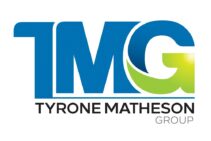
Resource Optimization and maximizing efficiency are essential for organizational success in today’s competitive business landscape. One often overlooked strategy for achieving these goals is identifying underutilized assets within your organization. These assets can range from physical resources like equipment and facilities to intangible assets such as employee skills and intellectual property. In this guide, we’ll explore actionable steps to help you uncover hidden gems and unlock the full potential of your organization’s resources.
Unlocking Potential
Identifying underutilized assets is crucial for resource optimization and organizational efficiency. These assets can include physical resources such as equipment and facilities and intangible assets such as employee skills and intellectual property.
Example: A manufacturing company realized they had excess warehouse space that could be repurposed for additional production lines, leading to increased output and revenue.
Assessing Current Resources
Conducting a comprehensive assessment of your organization’s current resources is the first step in identifying underutilized assets. Evaluate equipment utilization rates, employee skill sets, and the effectiveness of current processes to pinpoint areas of inefficiency.
Example: A retail store analyzed its inventory turnover rates and discovered that specific product categories were consistently underperforming. This prompted the store to adjust its purchasing strategy and reallocate resources to more profitable items.
Employee Skills and Talents
Your organization’s greatest assets may lie within your employees’ skills and talents. Conduct skill assessments and encourage professional development to uncover hidden talents and leverage them to drive innovation and growth.
Example: A software company encouraged employees to participate in cross-functional training programs, discovering that a marketing team member had programming skills that could be utilized to develop new product features, enhancing the company’s offerings.
Leveraging Technology
Technology can be a powerful tool for identifying underutilized assets within your organization. Utilize data analytics and business intelligence tools to analyze operational data and identify areas of inefficiency or untapped potential.
Example: A hospitality company implemented a guest feedback system that collected guest preferences and behavior data. It enabled. This enabled the company to identify underutilized amenities and tailor its offerings to meet guest needs better, resulting in increased customer satisfaction and loyalty.
Collaborative Problem-Solving
Encourage cross-departmental collaboration and brainstorming sessions to identify underutilized assets and develop innovative solutions. Empower employees at all levels to contribute ideas and insights, fostering a culture of continuous improvement and resource optimization.
Example: A healthcare organization held regular interdisciplinary team meetings to discuss patient care processes. These meetings identified underutilized medical equipment and developed new protocols to streamline patient care delivery.
Continuous Monitoring and Adjustment
Identifying underutilized assets is an ongoing process that requires continuous monitoring and adjustment. Review key performance indicators and metrics regularly to track progress and identify new opportunities for optimization.
Example: A financial services firm implemented a quarterly review process to assess the utilization of software licenses and subscriptions. This allowed them to identify unused licenses and reallocate resources to more cost-effective solutions, resulting in significant cost savings.
In conclusion, identifying underutilized assets is essential for maximizing efficiency, driving innovation, and achieving sustainable growth within your organization. By conducting thorough assessments, leveraging employee skills and talents, utilizing technology, fostering collaboration, and implementing continuous monitoring, you can uncover hidden opportunities and unlock the full potential of your organization’s resources.
Are you optimizing the resources in your organization? Let’s talk!
